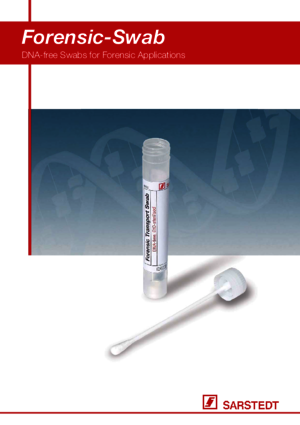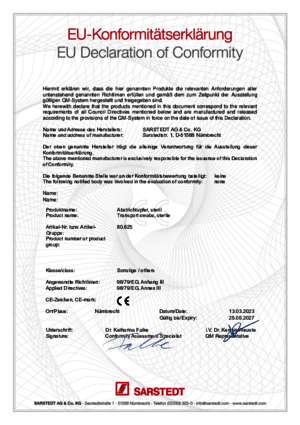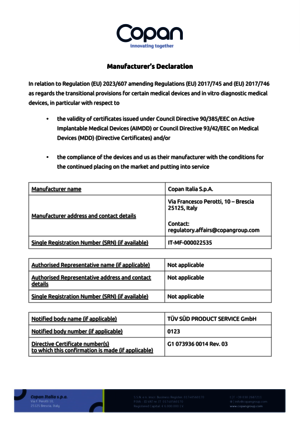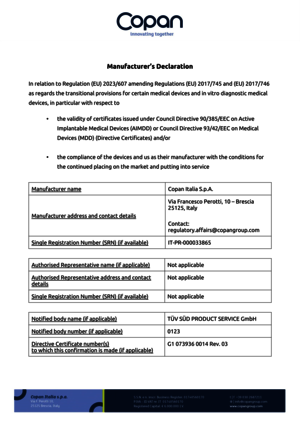
Microbiology
Microbiology
Language:
Some of the data collected by this provider is for the purposes of personalization and measuring advertising effectiveness.
We do not use cookies of this type.
Some of the data collected by this provider is for the purposes of personalization and measuring advertising effectiveness.
Some of the data collected by this provider is for the purposes of personalization and measuring advertising effectiveness.
We do not use cookies of this type.
Swabs are used to collect and transport bacteriological, serological and cytological samples. The swabs are suitable for use both on intact skin and in natural body orifices. They can also be used in the food industry within the scope of hygiene controls and for sample collection from various surfaces. In addition to short and long swab designs, swabs made from plastic, wood or aluminium and versions with and without a transport medium to stabilise the sample are also available.
Swabs, in the tube, no medium, (LxØ): 108 x 16 mm, stem material: PS, stem length: 83 mm, swab material: viscose, sterile, 500 piece(s)/bag
Swabs, in the tube, no medium, (LxØ): 175 x 12 mm, stem material: PS, stem length: 131 mm, swab material: viscose, sterile, 100 piece(s)/case
Swabs, in the tube, no medium, (LxØ): 175 x 12 mm, stem material: aluminium, stem length: 133 mm, swab material: viscose, sterile, 100 piece(s)/case
Swabs, with tube included, Amies gel, (LxØ): 175 x 12 mm, stem material: PS, stem length: 131 mm, swab material: viscose, sterile, 1 piece(s)/blister
Swabs, with tube included, Amies gel, (LxØ): 175 x 12 mm, stem material: aluminium, stem length: 133 mm, swab material: viscose, sterile, 1 piece(s)/blister
Swabs, with tube included, Amies gel with charcoal, (LxØ): 175 x 12 mm, stem material: PS, stem length: 131 mm, swab material: viscose, sterile, 1 piece(s)/blister
Swabs, with tube included, Amies gel with charcoal, (LxØ): 175 x 12 mm, stem material: aluminium, stem length: 133 mm, swab material: viscose, sterile, 1 piece(s)/blister

Swabs without medium are often used to swab intact skin and natural orifices in the body which are examined rapidly (within one hour). We offer two versions: swabs made of plastic and aluminium.
Our swabs with transport medium are suitable for extended transport (up to several days) of the samples collected, thereby increasing the recovery rate. In this way, even sensitive pathogens can survive transport. The rod material is available in both plastic and aluminium.
A swab with Amies transport medium enables the transport of the samples and increases the recovery rate. Charcoal in the medium neutralises bacterial toxins and other inhibitory substances and also causes an improved recovery rate of various different bacteria. However, the charcoal can disrupt the analysis on the Petri dishes. The user must therefore check the suitability of the transport medium under laboratory conditions.
80.1361 – e.g. throat, vagina, wounds and skin
80.1362 – e.g. throat, urogenital wounds
80.1363 + 80.1366 – for paediatrics and narrow orifices such as ears, nose, corners of the eyes, urethra in men and women
Our 80.625 swab cannot be autoclaved. The tube in the swab is made out of the autoclavable plastic polypropylene, but both the cap (polyethylene) and the swab stem (polystyrene) are not autoclavable. This is due to the low temperature resistance of the PE and PS plastic, which have a maximum long-term use temperature of 60–80°C. Autoclaving is carried out at temperatures of at least 121°C and it is not possible to rule out an impairment of the product as a result of this.
The distance between the base of the cuvette and the centre of the photometer light beam is defined as the centre height (Z). The centre height can vary depending on the manufacturer and the type of photometer, which is why Sarstedt offers UV cuvettes in two different centre heights (Z = 8 mm and Z = 15 mm). If customers do not know the exact centre height of the photometer, this information can be requested from the device manufacturer.
Fluorescence measurements are carried out at a 90° angle to the direction of the photometer beam and can therefore only be used in quadruple optical cuvettes. We offer a quadruple optical cuvette made of polystyrene (67.754) or PMMA (67.755) especially for this application.
Thanks to their optical properties, our polystyrene cuvettes can be used from the visual range to the UV range to 330 nanometres (nm). In contrast to this, acrylic (PMMA) cuvettes are characterised by a high level of transparency in the UV range and can therefore be used to approximately 300 nm. The plastic material of the UV cuvette enables measurements in the UV range from a wavelength of 220 nm.




Please select your location, so that we can show you the product range relevant to your country / region.
